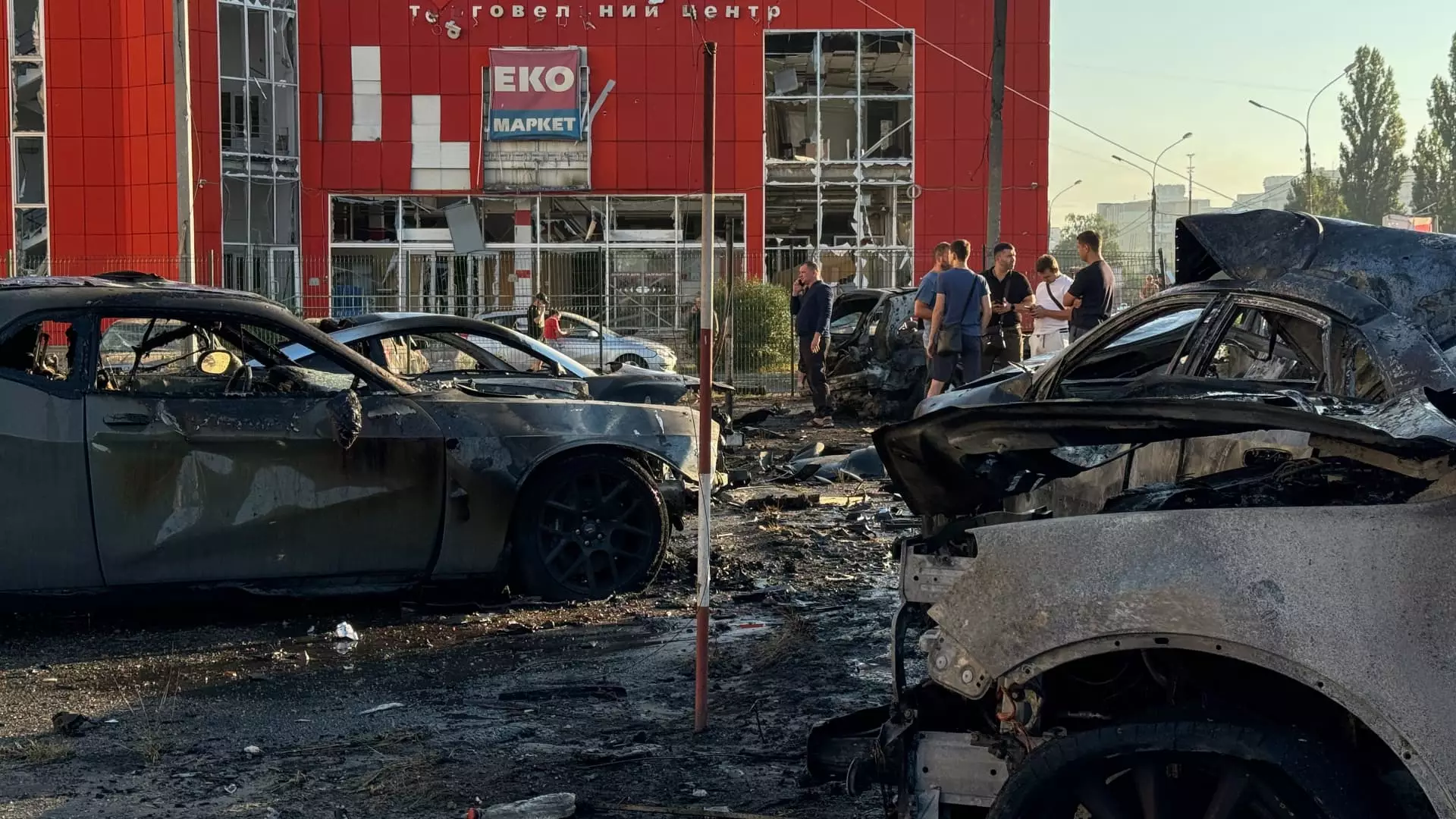As the conflict between Ukraine and Russia marches relentlessly forward, the situation has taken a dramatic turn in recent days. Despite relentless assaults on Ukrainian territories, Ukrainian forces have successfully infiltrated Russia’s Kursk region, marking a significant shift in the dynamics of the war. Recent reports highlight that even while Russia continues to unleash brutal offensives across Ukraine, including attacks on regions such as Sumy, Ukrainian troops have made notable advances, applying pressure on Russian defenses inside their territory.
On a particularly alarming Saturday, a Russian missile strike in the city of Sumy underscored the destructive capability of Russian forces, igniting fires that resulted in injuries to civilians and damage to property. However, Ukraine’s resilience is on full display as their air force successfully intercepted 14 Russian drones overnight, indicating a commitment to maintaining aerial superiority and protecting key urban areas like Kyiv from external threats.
The Ukrainian counteroffensive, which began in earnest on August 6, has now extended into the Kursk region, where significant operations have yielded strategic victories. The capture of Sudzha, a town with a prewar population of approximately 5,000, represents a critical milestone. This achievement reflects not just territorial gains but also a psychological boost for Ukrainian forces and a stark awakening for Russian authorities, who have been forced to confront the reality of cross-border incursions.
The atmosphere in Sudzha paints a vivid picture of the ongoing conflict: a Lenin statue stands disfigured amidst the destruction, and the local administration building bears the scars of combat. Observations from journalists visiting the area reveal the chaos resulting from these military engagements. Alexsander Kots, a military correspondent for a pro-Kremlin publication, acknowledges that Ukrainian forces maintain pressure in Kursk, signaling a persistent threat just beyond Russian borders.
A noteworthy development in the battle for Kursk includes the reported destruction of a bridge across the Seim River, allegedly struck by Ukrainian forces using U.S.-made HIMARS rockets. Though the extent of the damage is difficult to verify independently, it highlights a tactical effort by Ukraine to disrupt Russian supply lines. The Institute for the Study of War corroborated footage showing the aftermath, while local bloggers echoed concerns about the potential logistical complications for Russian troops.
However, Russian military analysts remain cautious in their assessments. They express that while attacks on critical infrastructure such as bridges could impede some military operations, alternative supply routes and pontoons remain available for Russian forces. This underscores the complexities of modern warfare where adaptability and rapid resource allocation often dictate the pace and success of military operations.
The ongoing military engagements have left civilians in the Kursk region in a state of panic and confusion. With upwards of 120,000 civilians evacuating due to the escalated violence, local activists indicate a palpable sense of fear permeating communities. There is a stark contrast between the perception of regional stability and the harsh reality of war breaking into what many believed were secure territories.
In a concerning note, Russia’s Emergency Situations Ministry announced that many of these evacuees, including thousands of children, are now housed in temporary accommodations. This situation illustrates the war’s reach beyond the battlefield, affecting civilian lives dramatically. Concurrently, Ukrainian forces have captured a number of Russian soldiers during their advances in Kursk, adding another layer to the complex humanitarian and political ramifications of this conflict.
In a detention center visited by the Associated Press, images of captured Russian soldiers walking in chains highlight the human cost of warfare. Ukrainian President Volodymyr Zelenskyy acknowledged the efforts of his troops in capturing enemy personnel while also reaffirming the commitment to balancing the exchange of prisoners. His messages stress a moral imperative beside tactical military objectives—a reminder of the human emissaries lost on both sides in such a brutal encounter.
As the conflict evolves, it remains essential to scrutinize the overarching implications of these battles—both for Ukraine’s sovereignty and for the geopolitical landscape of Eastern Europe. The ongoing push into Russian territory signifies not only military resilience but a profound shift in the narrative surrounding the war, leaving observers to ponder the potential outcomes of such audacious strategies. This evolving situation calls for careful analysis, as the very fabric of regional stability hangs in the balance amidst the clashing of arms.


Leave a Reply